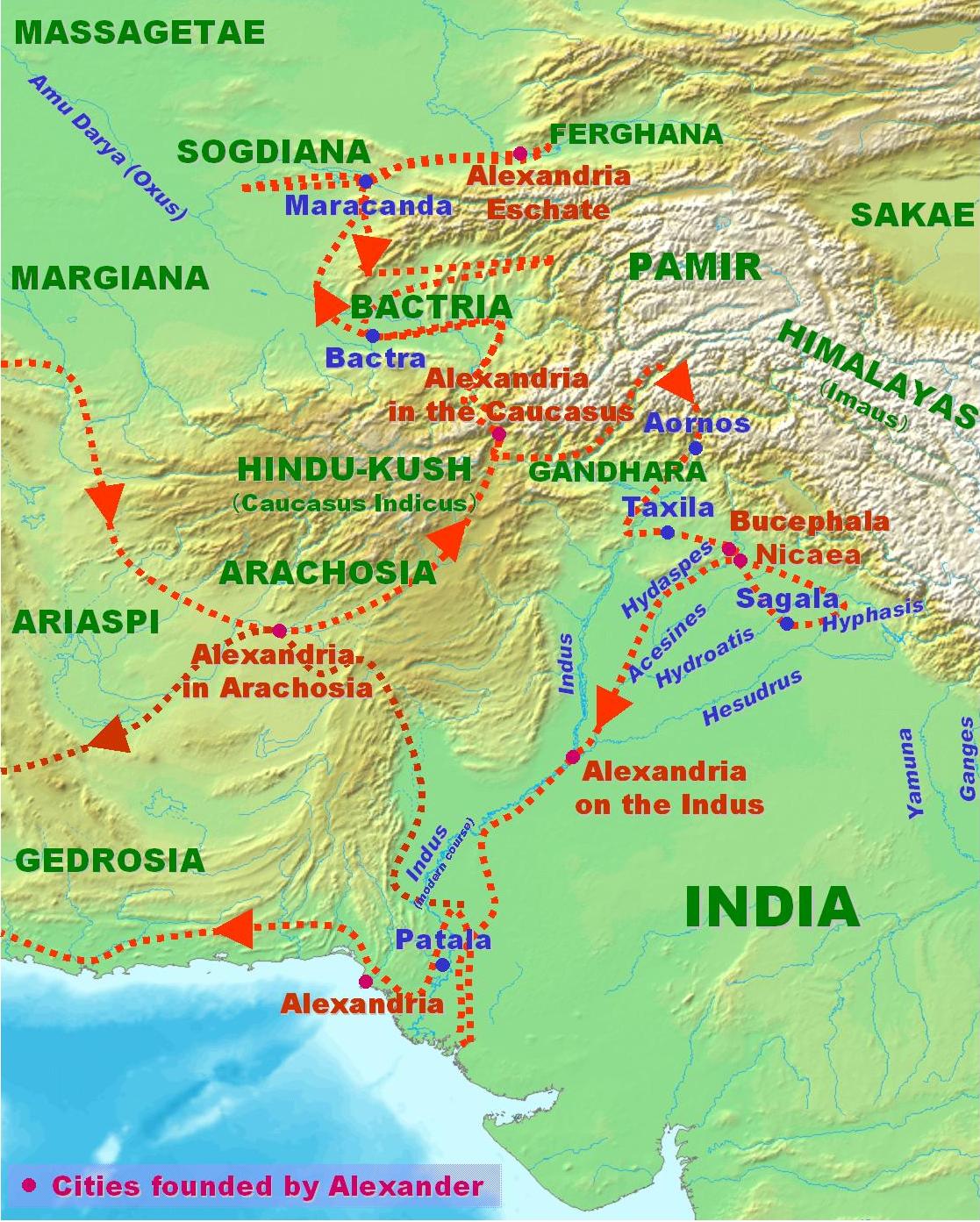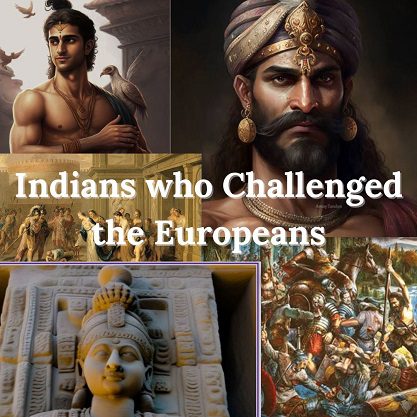Alexander and his conquests have been immortalized by historians. A king from Macedonia who had an ambitious plan of world conquest had been praised in the writings of the Greeks and other notable scholars of the world.
But there is one unheard part of his conquests that hasn’t gained the attention of modern-day historians. The Indian campaigns of Alexander where the Macedonians met with fierce resistance is an untold chapter that to this day remains hidden from most people.
Although the Indians were not able to put a united front against Alexander individually they all put up a staunch resistance till their last breath.

According to General Chesney, the army of Porus fought gallantly and he quoted “were loud in praise of the Indians, never in all their eight years of constant warfare had they met with such skilled and gallant soldiers who moreover surpassed in stature and bearing all the other races of Asia. ”
This quote gives us glimpses of the bravery shown by the Indians in front of the heavily skilled Macedonians.
So far we have focused mainly on the Battle of Hydaspes whenever we talk about Alexander’s Indian campaigns. But in reality, the Macedonians fought against a number of Indian chiefs which fought bravely against European invaders.
In this article, we will shed light on the forgotten sacrifice of those kings and queens who despite being outnumbered put up a gallant fight and died heroic deaths for the sake of their homeland.
Content
The Macedonians in India: Europeans against the Indians
Alexander after crushing the power of the Persians around 330 BCE and disintegrating their capital the Macedonians marched towards the Indian subcontinent.
Around 327 BCE Alexander reached Hindu kush subjugating the territories of Bactria and the region of Bokhara. At this time an Indian king aware of the Macedonina’s intentions sent friendly delegations in order to save his empire.
![Persian and Greek Invasion - Cyrus invasion, Alexander's Invasion & Impact [Ancient Indian History For UPSC]](https://cdn1.byjus.com/wp-content/uploads/2018/11/free-ias-prep/2017/05/29090841/Alexander-Empire_323bc.jpg)
The Indian king who sent this friendly invitation was known as Ambhi the ruler of Taxila. According to Curtius, the Indian ruler sent around 65 elephants, and around 3,000 bulls to the invaders.
With the surrender from an Indian king, Alexander then decided to conquer the land which was inhabited by the Hindus.
The Resistance of Hill Kingdoms
Kingdom of Ashtaka
It is believed Alexander himself led this expedition against this kingdom whose ruler was called Ashtakaraja or Astes according to the Greeks. The kingdom is believed to have been located around the region of Swat Valley.
The siege of this kingdom continued for one month and the king died fighting for his and his countrymen’s freedom. It is interesting to note that such a small kingdom was able to halt the army of Alexander for one month.
Kingdom of Asvayana (Aspanion) and Asvakayana (Assakenoi)
These hill kingdoms located around the regions of Kunar, Swat, and Panjkora offered massive resistance to the Macedonians. According to the Greeks, Alexander got seriously injured in this campaign.
According to the Greek historian Curtius, the kingdom of Asvakayana of Assakenoi possessed a significant amount of military strength.
They had located their capital in a region called Massaga or Masakavati.
They had around 35,000 infantry, 30,000 cavalry, mercenaries, and elephants. Furthermore, the kingdom was ruled by a queen called Cleophes who with the support of another Indian monarch known as Abhisara.
The hill kingdom fought gallantly under their queen’s leadership. There people chose death rather than dishonor. The queen along with her infant child were made POW.
After the battle, the Macedonians massacred the local populace of the hill kingdom. This is another part of the Indian campaigns of Alexander.
The people of India resisted the onslaughts heroically and fought audaciously but their opponent followed the cruel practice of massacring local villages and citizens.
Clash against the great Porus and the Resistance of Kathaian
After taking the hilly kingdom Alexander reached Taxila around 326 BCE where Ambhi warmly welcomed him. From here the Macedonians motivated by expansion policy assembled their troop to take down the challenge of Porus.
The Indian king Porus or Paurava was the ruler of the region between Jhelum and Ravi. However, the submission offered by various Indian chiefs might have broken his patriotic sentiments.
However, Porus decided to stop the Macedonian’s advance. He decided to face the invaders boldly no matter what will be the outcome.
The battle was tough and both sides suffered serious losses. The elephants of Porus brought havoc on the Macedonian infantry. While the cavalry charge led by Alexander breaks the lines of Porus’s infantrymen.
In the end, the Macedonians, after a hard-fought battle, captured King Porus, who had around 9 wounds on his body,, and continued to fight. We had covered the story of the battle of Hydaspes in our previous article. Read here…Battle of Hydaspes
After the success of King Porus Alexander decided to further push deep inside the Indian territories. But the flames of independence in the heart of the Indians remained active.
The region of Qandhar under Damaraxus and Assakenoi went into full-scale rebellion. The Assakenoi even killed the Satrap or governor.
While retreating Alexander also faced the might of the Kathaians who were regarded as the best warriors of the Punjab region.
It is believed that the Kathaians were able to inflict heavy damage on the Macedonians and injured around 1200 of their finest troops. From here Alexander marched towards Beas where his troops which were fighting for almost a decade rose in rebellion.
The mutiny of the Macedonian troops forced them to change their minds the latter decided to halt his further advance into Indian territories and return home.
Resistance from Malavas and Kshudrakas
The kingdoms of Malavas and Kshudrakas joined hands with each other and decided to put up a fight against the Macedonians while they were retreating from India.
The combined armies of the Malavas and Kshudrakas assembled an army of around 10,000 cavalry, chariots, infantry, and many Brahmins who despite having inappropriate combat skills chose to fight rather than surrender.
It is believed that all the regions of the Malava kingdom offered a significant amount of resistance to the Macedonians. Furthermore, the Brahmins of Malava region even injured Alexander which made the invaders anxious.
The Arjuniyanas with their small contingent also opposed the invaders and fought till their last breath.
The Reality of Alexander’s Invasion
According to R.C. Majumdar, the invasion led by the Macedonians under the leadership of Alexander is highly praised by Greek and modern Western historians. However, the reality and the success of this invasion are still a topic of debate.
Alexander’s conquest of Indian territories couldn’t bring permanent changes in the Indian culture and even literature. The Macedonians no doubt fought the Great War against the Indian armies but in reality, the former were petty chiefs ruling small territories.
The clans that the Macedonians fought never got a chance to form a united front against the European invaders.
The Macedonians never fought a war against an organized empire of the Indian Territory which could have stopped their advance. It is true that Alexander gained a fair amount of success in his Indian campaigns but in return, he lost his finest soldiers and in many instances, his life was at stake too.
Even the clans who fought against the Macedonians bravely resisted the invaders. This is enough to conclude that the Macedonians faced intense resistance from the Indian chiefs. The bravery of the hill kingdoms of Ashtaka, Asvakayana, Asvayana, Porus, Kshudrakas, and their Brahman allies all fought bravely and earned their respect in the pages of Indian History.
Furthermore, after the retreat of Alexander the newly settled territories of the Macedonians were wiped out by a charismatic monarch known as Chandragupta Maurya.
LIKE WHAT WE ARE DOING? DONATE TO DHARMAYUDH
If you support what we are doing and would like to contribute to help us grow and reach more Indians to teach them more about such forgotten historic Indian Heroes and stories, please consider donating any amount. It will help us grow.

